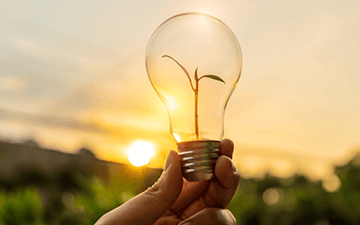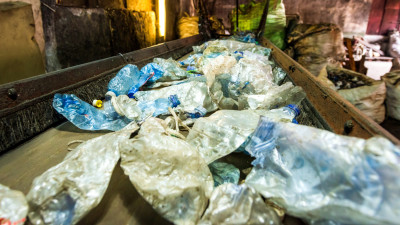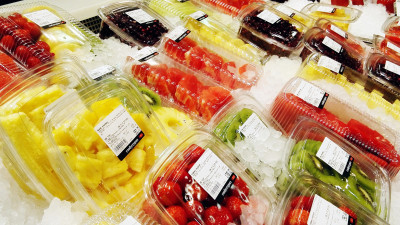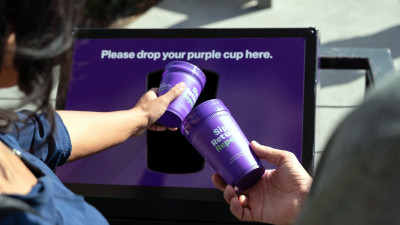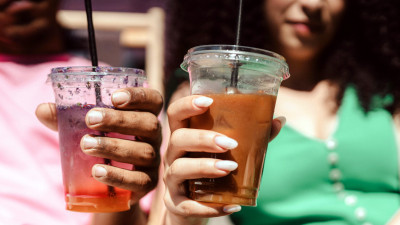In one of the highlights of the SB’16 Copenhagen preview event in Denmark last week, Simon Hoffmeyer Boas, Sustainability Director at Carlsberg, introduced the beer giant’s pioneering new packaging solution, The Green Fibre Bottle. Away from the stage, Boas took a moment to discuss the challenges of sustainable packaging and the importance of consumer engagement to the development and success of eco-friendly products.
Carlsberg:
How Engagement Is Key to the Success of Sustainable Packaging
In one of the highlights of the SB’16 Copenhagen preview event in Denmark last week, Simon Hoffmeyer Boas, Sustainability Director at Carlsberg, introduced the beer giant’s pioneering new packaging solution, The Green Fibre Bottle. Away from the stage, Boas took a moment to discuss the challenges of sustainable packaging and the importance of consumer engagement to the development and success of eco-friendly products.
“Sustainable change needs to come from collaborations between consumers and brands,” Boas observed. “As a company we could create the most sustainable packaging in the world but if consumers throw it away in the wrong place it won’t be genuinely sustainable.”
When faced with these kinds of behavioural decisions, getting consumers to make more sustainable choices isn’t always easy, he explained.
“Unfortunately, you can’t simply edit out the higher-impact options. We know from our LCA that our refillable bottle is more environmentally friendly than our single-use bottles. However, in a fancy nightclub consumers will reject a bottle that has scuffs or scratches from multiple uses. If we try to force that change on them, they’ll simply buy something else.
“Our packaging has different roles in terms of consumer preference, so we work to reduce the environmental impact of all our bottles, whilst at the same time innovating more sustainable solutions for the future.”
As an example of impact limitation, Boas explained how Carlsberg has been leveraging the competitive element of gamification to encourage recycling of their single-use bottles.
“At the last European Championship in football, we placed flags on waste bins in the fan-zone areas and offered prizes to the consumers that recycled the most. If there’s one thing you can bank on,” Boas laughed, “it’s competitiveness between football fans!”
However, he reflected that helping consumers making the transition to innovations such as the Green Fibre bottle requires a more subtle approach to consumer engagement.
“If we were to launch it suddenly and go ‘ta-da, here’s a new bottle, it’s made from wood,’ then know we would receive consumer push-back.”
“We’ve seen it in the past with our refillable plastic bottle here in Denmark. From a sustainability perspective, that is a fantastic product — It is lightweight, it’s reusable, but consumers here rejected it because it didn’t have the qualities they had come to expect. It didn’t make the right sound as you opened it and they didn’t view plastic as being an appropriate material for a product marketed as the best beer in the world.
“With the Green Fibre project, our obvious concern is that an opaque bottle could make some consumers uneasy, so we’ve been working on ways to make the bottle more appealing,” he said. “We know from previous conversations with consumers that if we could design a bottle that better insulated their beer, which wood fibre does, then that would be an attractive selling point.”
“Presenting the fibre bottle as a product that keeps beer colder for longer takes that dialogue and uses it to frame the change in a positive light. It’s this process of engaging and prepping the consumer that’s been the key for us.”
But smoothing the introduction of new, better products is not the only way that consumer engagement can help the brands innovate for sustainability. In September last year, Carlsberg launched a ‘Cheers to Green Ideas’ campaign, which encouraged consumers to submit ideas that could improve the environmental impact of beer.
“There was really two targets to the campaign,” Boas explained. “One was to get consumers to continue talking and think about sustainability, the other was to actually explore these new avenues.”
Winning ideas from that campaign were announced during the COP21 Climate Summit in Paris, and included using microalgae to treat wastewater and using spent grain as a wood substitute. Both projects that Carlsberg are investigating further.
“Of course you can’t guarantee the solutions you receive from consumers will be technically feasible,” Boas said, “but it’s inspirational and something else might spring from it. It also shows a growing demand from consumers for companies that engage with them on sustainability. That’s a desire that Carlsberg want to satisfy.”

